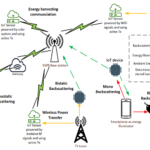
September 4, 2024 By Aharon Etengoff
Collected at: https://www.eeworldonline.com/what-to-expect-from-5g-advanced/
First outlined in 3GPP Release 18, 5G-Advanced (5.5G) (Figure 1) significantly improves network efficiency, latency, throughput, and coverage. 5G-Advanced adds evolved multiple input multiple output (MIMO) technology and security updates to new artificial intelligence (AI) and machine learning (ML) capabilities.

Figure 1. This detailed timeline illustrates the evolution of 5G standards from 2018 to 2029. (Image: Dell’Oro Group)
With new features, 5G-Advanced brings applications such as extended reality (XR), industrial IoT (IIoT), and smart agriculture. Indeed, 5G-Advanced is already helping 3GPP formulate nascent 6G technical specifications.
Spectral efficiency
5G-Advanced introduces substantial improvements to massive MIMO, increasing both uplink and downlink throughput. It allows user equipment (UE) to more effectively share the same time and frequency resources, boosting capacity. Spanning multiple releases, 5G-Advanced aims to comprehensively improve spectrum efficiency by:
- Enabling sub-band full duplex (SBFD) mode (Figure 2), effectively splitting the time division duplex (TDD) carrier into sub-bands for simultaneous transmission and reception in the same slots.
- Streamlining multi-transmission and reception point (TRP) operations, improving single-TRP in the downlink and multi-TRP operation in the uplink.
- Supporting coherent joint transmissions (CJTs) in non-ideal synchronization and backhaul scenarios such as timing mismatches, variable latency, and packet loss.
- Bolstering millimeter-wave (mmWave) capabilities, with a focus on improving mobility and penetration characteristics for both indoor and outdoor deployments.
- Supporting 5 MHz spectrum bandwidth for Reduced Capacity (RedCap) 5G NR-Light devices in frequency range 1 (FR1).
- Enhancing channel state information (CSI) feedback, crucial for improving beamforming and overall network performance.
- Optimizing dynamic spectrum sharing (DSS).
- Combining terrestrial and satellite communications into a single standard.
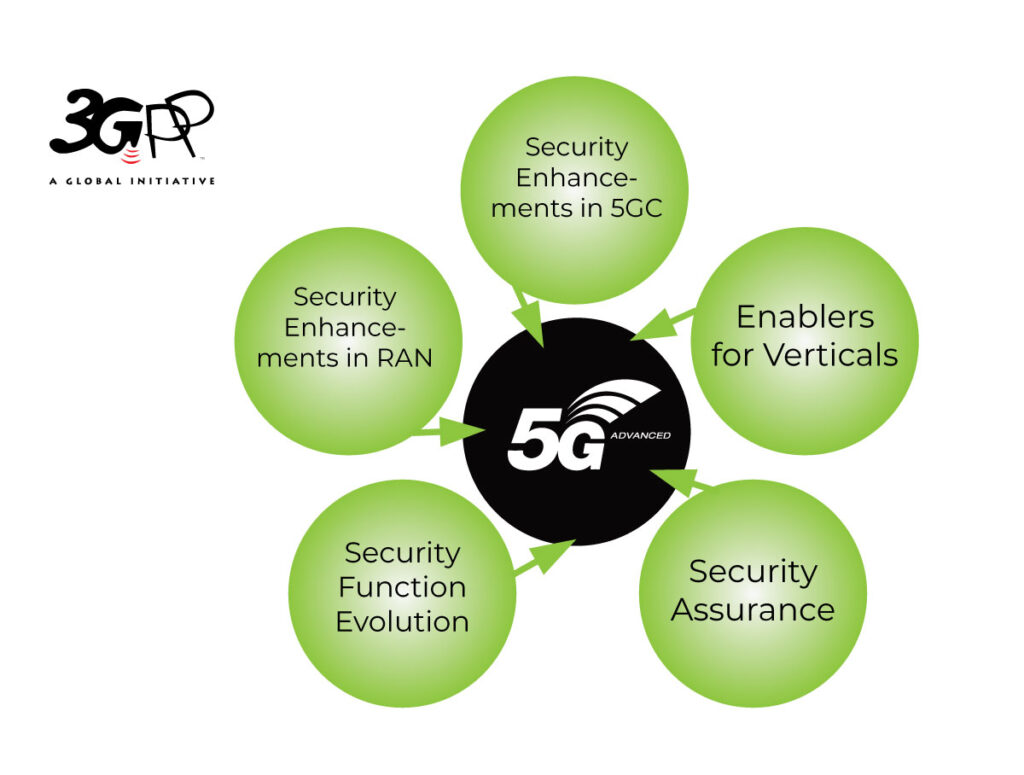
Figure 2. This 3GPP diagram illustrates 5G-Advanced security features based on Release 18. (Image: 3GPP)
Exploring the evolving role of AI and ML
Sophisticated AI and ML capabilities are set to further augment the spectral efficiency and performance of 5G-Advanced (and 6G) networks. Potential implementations include AI-enabled beam management adapting to dynamic environmental conditions and AI-based approaches for handover optimization. AI and ML can also help streamline network slicing by predicting and mitigating interference in real-time, while improving CSI feedback, modulation, and coding schemes.
AI and ML are expected to increase network traffic forecasting accuracy, optimize load balancing across small and macro cells, and enable inference for precise indoor positioning when global navigation satellite systems (GNSS) are unavailable. Lastly, cross-node implementation of AI and ML is anticipated to facilitate network-wide training, inference, and proactive maintenance.
Bolstering security: from network automation to the edge
5G-Advanced discusses and implements crucial security improvements (Figure 2), including:
- Expanding the N32 Interconnect Security (PRINS) protocol to accommodate roaming hubs and intermediaries.
- Updating authentication protocols for edge client and server interactions.
- Upgrading Service-Based Architecture (SBA) with new automated certificate management in cloud environments — incorporating a profile for the Internet Engineering Task Force (IETF) certificate management protocol (CMP).
- Introducing 256-bit algorithms for encryption and integrity protection of the radio interface, including a 256-bit version of the MILENAGE authentication algorithm.
- Updating the Common API Framework (CAPIF) to obtain permission from the resource owner before accessing data.
- Improving security for network automation and AI and ML, such as procedures for ML model storage and sharing, federated learning, and data analytics sharing in roaming scenarios.
- Adding security measures for UE-to-UE procedures and UE-to-network emergency services.
Expanding URLLC, RedCap, and mMTC capabilities
5G-Advanced seeks to further improve support for deterministic networking (DetNet) by building on the time-sensitive networking (TSN) capabilities outlined in 3GPP Release 17. Bolstering ultra-reliable low latency communication (URLLC), (Figure 3) 5G-Advanced more efficiently supports mission-critical applications, from the IIoT and connected vehicles to AR-assisted medical procedures.
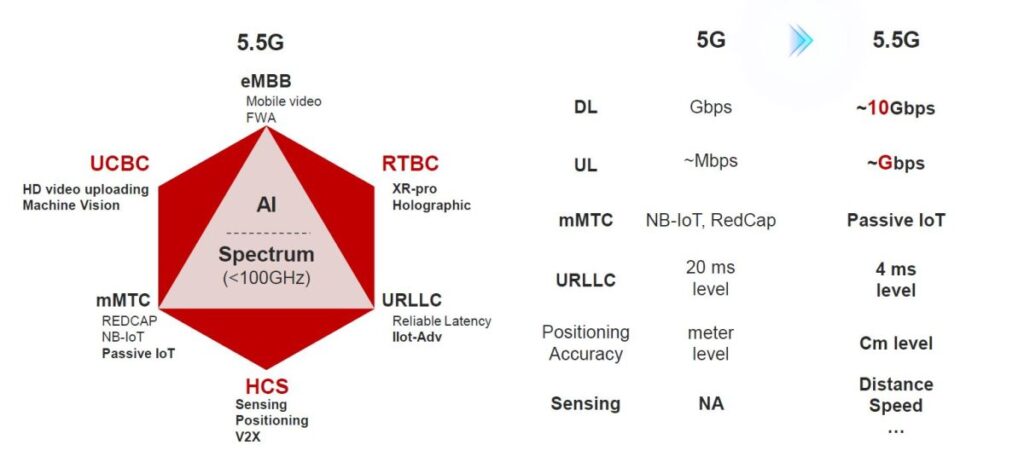
Figure 3. A comparison of key 5G and 5.5G technologies. (Image: Huawei)
5G-Advanced also expands support for Machine-Type Communication (mMTC) applications such as smart metering, environmental monitoring, and smart agriculture. 5G-Advanced improves sensing and positioning accuracy (potentially as low as sub-10 cm) for indoor and outdoor devices, significantly bolstering the precision of navigation, logistics, monitoring, and tracking systems.
For 5G RedCap applications like wearables, IIoT sensors, and video surveillance, 5G-Advanced aims to augment key capabilities introduced in Release 17, focusing on further reducing device complexity (antenna count) and power consumption. Key features in Release 18 span 20-MHz or 5-MHz bandwidth (in FR1), full duplex/half duplex and time division signal duplication, 64-level QAM (256 optional), and 10 Mbits/sec maximum data speeds (DL and UL). 5G-Advanced also explores new use cases for RedCap, including video surveillance for industrial quality control, and discusses improved uplink capabilities for time-critical communications.
Additionally, 5G-Advanced introduces new objectives for ambient IoT devices (Figure 4) that harvest energy from radio frequency (RF) waves, light, or motion. Ambient IoT is expected to support a wide range of use cases, from industrial wireless sensor networks and smart logistics (warehouses and storage facilities) to supply chain tracking.
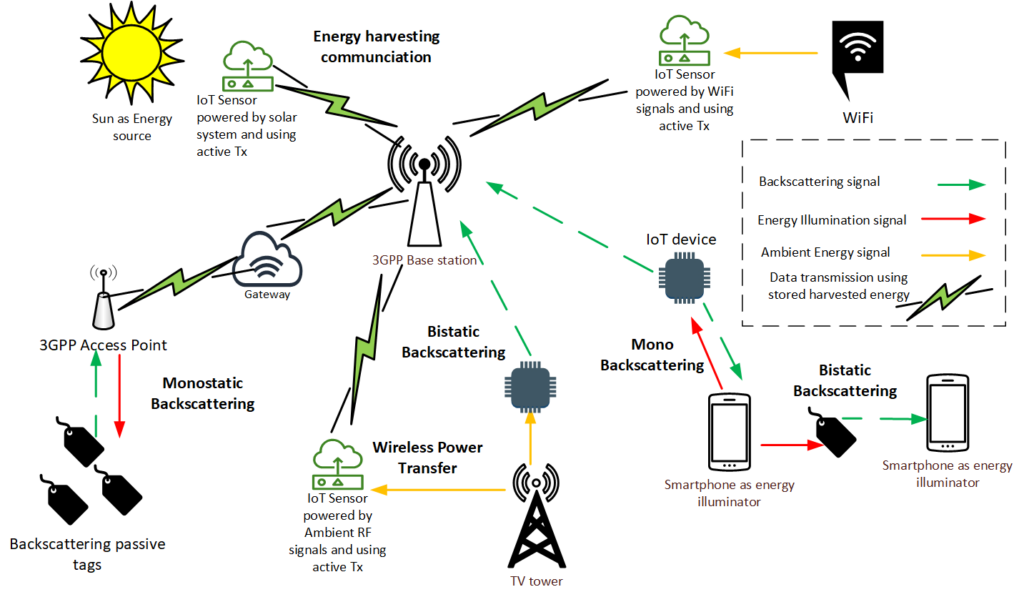
Figure 4. Diagram illustrating various methods of energy harvesting for ambient IoT devices. The image depicts solar power, Wi-Fi signals, and ambient RF signals. (Image: arXiv)
Accelerating XR adoption
Encompassing augmented reality (AR), virtual reality (VR), and mixed reality (MR), XR delivers immersive and interactive experiences for gaming, training, and even complex medical procedures. 5G-Advanced boosts support for XR applications, improving uplink and downlink scheduling and more efficiently allocating bandwidth and power. Key XR features explored in 5G-Advanced include:
- Aligning UE discontinuous reception (DRX) with XR traffic periodicity to save power.
- Using search space set group (SSSG) switching and physical downlink control channel (PDCCH) skipping to optimize capacity.
- Implementing configured grant periods with multiple physical uplink shared channel (PUSCH) intervals, allowing UEs to indicate unused occasions for reallocation by Next-Generation Node B (gNB).
- Leveraging cross-layer collaboration technology to prioritize the transmission of specific frames in XR video streams.
- Supporting synchronous transmission of multiple data streams (audio, video, control signals, and information collection signals) required for XR services, minimizing time differences between various service flows.
Bridging the 5G-6G gap
Mobile network operators (MNOs) expect new 5G-Advanced capabilities to broaden the scope and scale of services they offer, from URLLC in hospitals to mMTC smart agricultural networks stretching across hundreds of miles of farmland. With 5G-Advanced, MNOs can provide seamless private network connectivity for autonomous vehicles, smart grids, and logistics facilities such as warehouses and ports. The latest 5G standard will also help MNOs and their customers more efficiently comply with service level agreements (SLAs) and meet ever-increasing quality of service (QoS) metrics.
Bridging the gap between the two standards (Figure 5), 5G-Advanced is anticipated to help the industry prepare for the widespread deployment of 6G infrastructure and devices in the 2030s. Although still a nascent standard, 6G will build on key 5G-Advanced innovations that deliver efficient spectrum management, expanded coverage, ultra-low latency, and increased throughput.
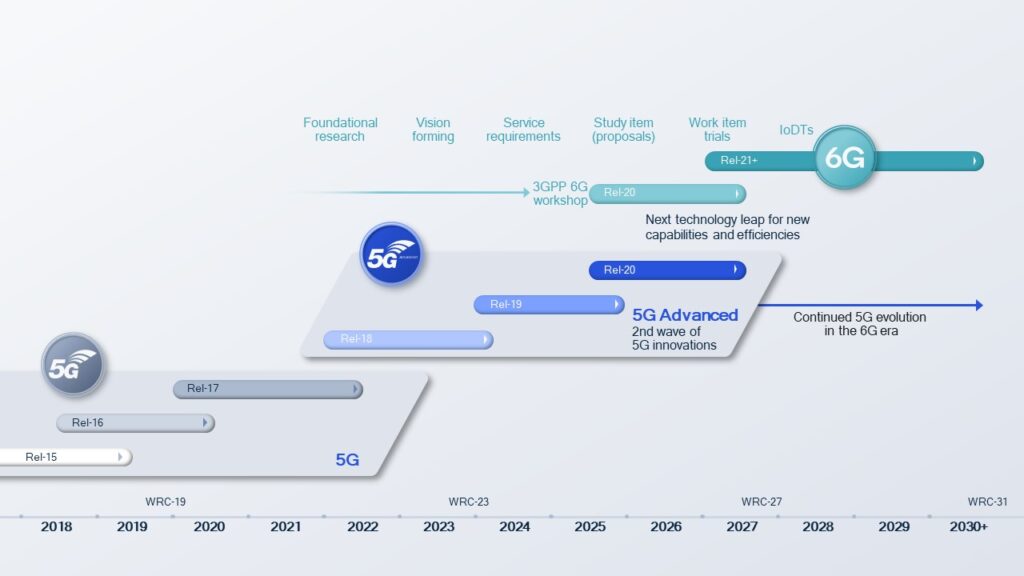
Figure 5. 5G-advanced moves 5G closer to 6G. (Image: Qualcomm)
Led by 3GPP, the development of 5G-Advanced continues in parallel with early 6G exploration. For 5G-Advanced, the 3GPP will focus on further refining channel modeling for integrated communication and sensing (ISAC), improving capacity and latency with SBFD, verifying 3GPP channel models in higher frequency ranges, and expanding advanced MIMO technologies in the upper mid-band spectrum (7 GHz to 16 GHz) to more efficiently support wide-area coverage.
Summary
5G-Advanced significantly improves network efficiency, latency, throughput, and coverage. Still under development, the latest 5G standard introduces many new innovations, such as evolved MIMO, new AI and ML capabilities, and updated security protocols. 5G-Advanced optimizes URLLC, RedCap, and mMTC technologies, while accelerating XR adoption by facilitating more immersive experiences on both public and private 5G networks. Notably, the 3GPP is already building on key 5G-Advanced technologies for 6G, paving the way for widespread implementation of the upcoming standard in the 2030s.
References
5G Advanced – How Will it Impact the RAN Market?, Dell’Oro Group
3GPP Rel-18 Security – The Overview, Ericsson
3GPP Technology Trends, 5G Americas
An Overview of 5G Advanced Evolution in 3GPP Release 18, Ericsson
Rel-18 Security Feature Summary, 3GPP
3GPP CAPIF Framework – RNAA, 3GPP
Extended Reality for NR, 3GPP
XR and 5G: Extended Reality at Scale with Time-Critical Communication, Ericsson
5G-Advanced: Shaping the Future of Operator Services, GSMA
What’s Next in 5G Advanced?, Qualcomm
What is 5G Advanced and is it Ready for Deployment Any Time Soon?, IEEE ComSoc
5G Advanced Explained, Nokia
2024 Will Be the Year of 5G-Advanced, ABI Research
Empowering the Connected Future: 5 Key Technology Inventions in 5G Advanced Release 18, Qualcomm
What Are 5G’s, the Different Types, and How Are They Used?, 5G Technology World

Leave a Reply